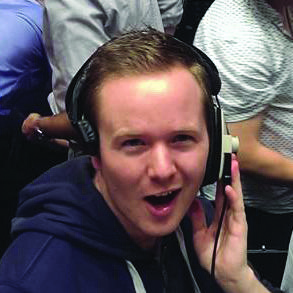In the thick of a workforce crisis, talk of reducing your hours can provoke strong reactions – but not necessarily those you would expect.
Once, working LTFT (less than full time) might have been considered the preserve of parents, or some unusual exceptions such as elite athletes. But increasingly, doctors are choosing not to cram every waking hour with clinical work and are working more flexibly, for a much wider range of reasons.
Whether they are juggling other responsibilities or health issues, favouring portfolio careers or a better work-life balance, advocates of LTFT all agree: it is why they are still in medicine. So, amid a workforce crisis, could more flexible working arrangements reduce burnout and improve retention?
Back from the brink
David Baglow and Phil Sherrard have no doubt going LTFT is the reason they are still practising doctors. Both anaesthetists in Sussex, Dr Baglow is a specialty trainee 7, while Dr Sherrard is a consultant.
 BAGLOW: Fresh set of values
BAGLOW: Fresh set of values
They speak openly about the health crises which have forced them to re-evaluate their relationship with work.
Five years, ago, Dr Baglow sustained a serious head injury, and had to learn to walk straight and function again. Eight months later, he had a stroke.
These two significant interruptions to his training have left him with some lasting ‘central fatigue’ – and a fresh set of values.
Going LTFT has enabled me to think about my goals, but also to make the most of the momentDr Baglow
He has reduced his clinical hours to 80 per cent, creating space for his work as a BMA rep, an advisory role with Surfers Against Sewage and time for himself. Dr Baglow works at the hospital where he was an ICU patient, and no one has ever questioned his decision to go LTFT.
‘I definitely feel like this is a second chance at life: everything is a bonus,’ says Dr Baglow. ‘Going LTFT has enabled me to think about my goals, but also to make the most of the moment.’
For Dr Sherrard, meanwhile, COVID stripped away all the things that brought balance to the long hours at work, especially his singing. (He sang back-up to Barbra Streisand at the O2 Arena.)
 SHERRARD: Sang back-up to Barbra Streisand
SHERRARD: Sang back-up to Barbra Streisand
In 2021, his mental health ‘tanked quite impressively’ and he was signed off for six months. Returning to work, he found that trying to combine an exacting full-time job with recovering and singing was too much.
‘Work was taking all my energy and I got bitter and angry about it,’ he says. When a consultant colleague suggested he consider reducing his hours a few months ago, he was initially hesitant. But dropping five clinical hours a week has changed everything.
‘I’m probably 10 hours a week busier than I was before, but it doesn’t feel like that because I’m well rested, happy and less stressed. And the department is getting better work out of me, not as much but better quality.’
Growing trend
More and more doctors, across grade and specialty, are choosing to reduce their hours, despite the cut in pay. The GMC’S National Training Survey for 2022 suggests 17.1 per cent of trainee doctors are working LTFT, compared with 9.1 per cent in 2013.
A 2022 survey of trainees by the Royal College of Physicians and the Royal College of Physicians and Surgeons of Glasgow found that three-quarters of respondents not LTFT were considering it. The trend is likely to grow: last year, COPMeD (Conference of Postgraduate Medical Deans) extended eligibility for LTFT work to those applying ‘for their wellbeing or through personal choice’, after BMA lobbying.
The picture varies across specialties: while LTFT is common in general practice and emergency medicine, it’s less common in surgical specialties, for example.
Work was taking all my energy and I got bitter and angry about itDr Sherrard
And while Drs Baglow and Sherrard’s trust offers various flexible arrangements including annualised contracts, other trusts are less progressive.
When Laura Owler first asked to reduce her hours as a foundation year 1 doctor two years ago for the sake of her mental health, she was met with resistance. No one else in her cohort worked reduced hours.
‘My training programme director said I needed to think of my colleagues because they would be picking up the extra stuff, and made comments like, “but you seem fine?”.’
 OWLER: Reducing hours the only way to stay healthy
OWLER: Reducing hours the only way to stay healthy
But she wasn’t: with no time or energy left for anything but work, her mental health declined and she was signed off for two months. In her next rotation, support from the trust’s champion for flexible training meant she was able to reduce her hours to 80 per cent for her FY2 last year.
Two others in her cohort soon followed her lead. ‘I knew it was the only way that I was going to keep working and stay healthy,’ says Dr Owler, now an FY3 locum in emergency care in Scotland. ‘I’m more switched on and invested when I’m at work now. I’m never going to work full-time again.’
Reflecting diversity
GP registrar Lucy-Jane Davis’s decision to prioritise her children and work LTFT means her training has been protracted – and longer than most. She doesn’t work school holidays either.
But she would argue the NHS workforce is full of people like her ‘who don’t fit the norm’: her husband, also a doctor, works LTFT for the same reason.
I’m more switched on at work now. I’m never going to work full-time againDr Owler
Employers and team leaders need to be much more flexible if they want to retain staff, she says. Her own bosses in Devon understand, but she still comes across those who don’t consider childcare responsibilities a good enough reason for needing to leave on time.
Her children’s nursery threatened to report to social services parents who were more than half-an-hour late for pick-up. She worries that, in a culture of overwork, those working LTFT are somehow considered lesser.
‘I’ve worked in departments where the comments were always, “you don’t seem to be here very much”, just because their part-time days didn’t coincide with mine. But in other units, consultants have said, “this registrar works part-time but actually they’re the heart of the unit because they’ve been here for so much longer than everybody else”.’
Better access
BMA representatives, including its LTFT training forum, have played a key role in lobbying for better access to and arrangements for LTFT working. They have pushed hard, for example, to secure positive steps such as extending eligibility for LTFT to include lifestyle choices.
Dr Davis has lobbied successfully for NHS pension contributions for LTFT workers to be based on actual earnings, not full-time equivalent salary. The BMA has produced Good Rostering Guidance for staff and employers.
But there are still many issues to iron out. Going LTFT has implications for length of training, as well as pay. While theoretically qualification is based on competency not duration of training, it’s common for someone working 80 per cent LTFT to have to train for 20 per cent longer regardless, says Kiara Vincent, an ST5 working LTFT in emergency medicine.
 VINCENT: Emergency medicine trainee and rugby club doctor
VINCENT: Emergency medicine trainee and rugby club doctor
‘In theory, you should do pro rata every type of shift and get the same breadth of experience as everyone else, but in practice that often doesn’t happen,’ says Dr Vincent.
Furthermore, in some trusts a trainee working 80 per cent LTFT does 40 hours, where in others, a 40-hour week is full-time. Contractual provisions ensuring that training LTFT should not be a hindrance to later career progression are not always upheld either.
Dr Vincent, who is also a BMA rep and doctor to a Leicestershire rugby team, regularly comes across LTFT trainees whose rotas and pay cheques are wrong or late. A new rotation can mean a change of non-working day, causing problems for those with other jobs or childcare responsibilities.
And where training opportunities fall on non-working days, LTFT trainees are obliged to come in regardless. Dr Vincent wanted a portfolio career, but she also feels full-time emergency medicine is not sustainable, at least at the moment.
‘Our rotas are designed for “x” number of people working 48 hours, so as soon as someone’s off, you’re short. There’s no slack. And the more senior you get, you could be making hundreds of decisions in a shift – and if you get decision fatigue, you may make the wrong one.’
Resisting pressures
Switching to work LTFT is not always a choice. Plenty would argue their hand has been forced by pressures, from pension tax to punishing schedules.
Poor pay means it is increasingly common for junior doctors to have a second, better-paid job, says Dr Vincent. Some are going LTFT so they can routinely pick up locum shifts, which are always readily available.
Meanwhile, some LTFT doctors are still working full-time hours, reportedly. Whatever your decision about how much you work, it must not be swayed by the demands of a broken system, says London consultant psychiatrist Jan Wise.
Dr Wise has worked part-time for the NHS for most of the past 20 years, partly to care for his daughters, partly to develop a portfolio career, including with the BMA. He insists doctors shouldn’t feel beholden to work more hours than they are contracted to, or comfortable with.
‘Putting in more time does not make the difference,’ says Dr Wise. ‘What makes the difference is doing your job with kindness and compassion, within the time allotted to do the task, so you also have time to recuperate.’

